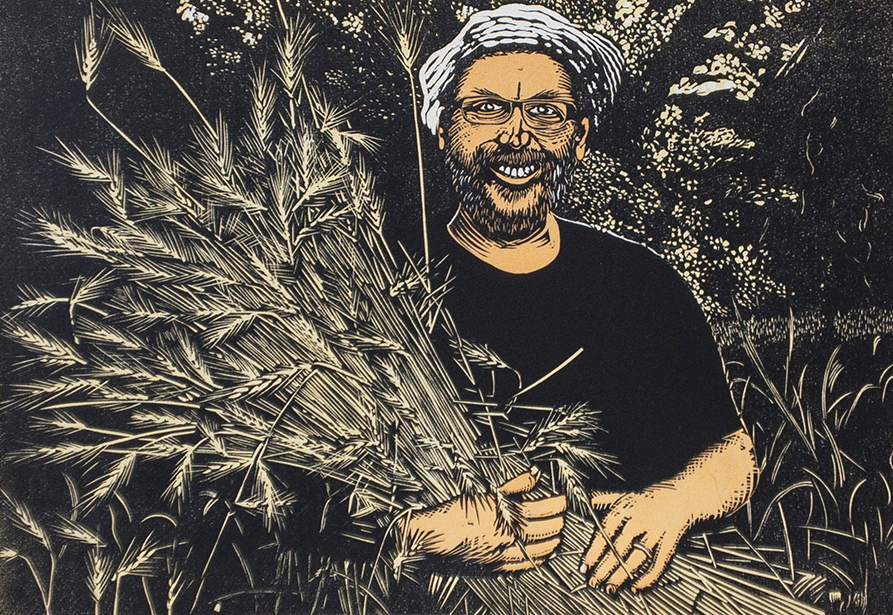Faculty
 David Esslemont is an artist who makes books, by hand. His current passion for food and cooking have lead to a string of “food” books – visual narratives that include Pizza from Scratch, Taxi Driver Curry and his prize-winning Chili: a recipe.
David Esslemont is an artist who makes books, by hand. His current passion for food and cooking have lead to a string of “food” books – visual narratives that include Pizza from Scratch, Taxi Driver Curry and his prize-winning Chili: a recipe.
Esslemont was born in Northumberland, England in 1953 and studied Fine Art (painting) at the Central School of Art and Design in London (now The University of the Arts). He was Artistic Director of the University of Wales Gregynog Press from 1985–97 and has won many book design awards including the Felice Feliciano International Award for Book Design in 1991.
His work can be found in both private and public collections worldwide, (his archive to 2005 is held at the University of Iowa.) He now lives in northeast Iowa.
His many honours include the Printmaking Today “Innovation in Printmaking Award” for Chili: a Recipe and “Best of Show Award”, also for Chili, in the exhibition “Feast” (23Sandy Gallery, Portland, OR, 2013). Inside the Book was chosen as the set book in the Open·Set Fine Binding Competition (American Academy of Bookbinding, 2017) – Esslemont was also one of the judges. His books and fine bindings have been included in numerous exhibitions such as: “InsideOUT” (Designer Bookbinders UK, 2014–15), “Feast” and “Marking Time” (Guild of Book Workers, 2009–11). He has won the Limited Edition Category at the British Book Design and Production Awards several times.
Esslemont has lectured widely in the U.K. and U.S.A., and his work can be found in both private and public collections worldwide. His archive to 2005 is held at the University of Iowa. He has been artist-in-residence with the Wordsworth Trust in Grasmere, England, and Minnesota Center for Book Arts (MCBA) in Minneapolis.His paintings, drawings and prints explore the relationship of elements in both the natural landscape and the abstract world. Often transforming and juxtaposing detailed images to create large scale montages in work such as ‘To Autumn’, where they become the background for lyrical calligraphy that further transform into a book.
His bindings have become blank canvases of leather or paper and increasingly his book art is moving beyond the covers to the walls and while the textual element may still be referenced, it is visual forms that are currently predominant.

